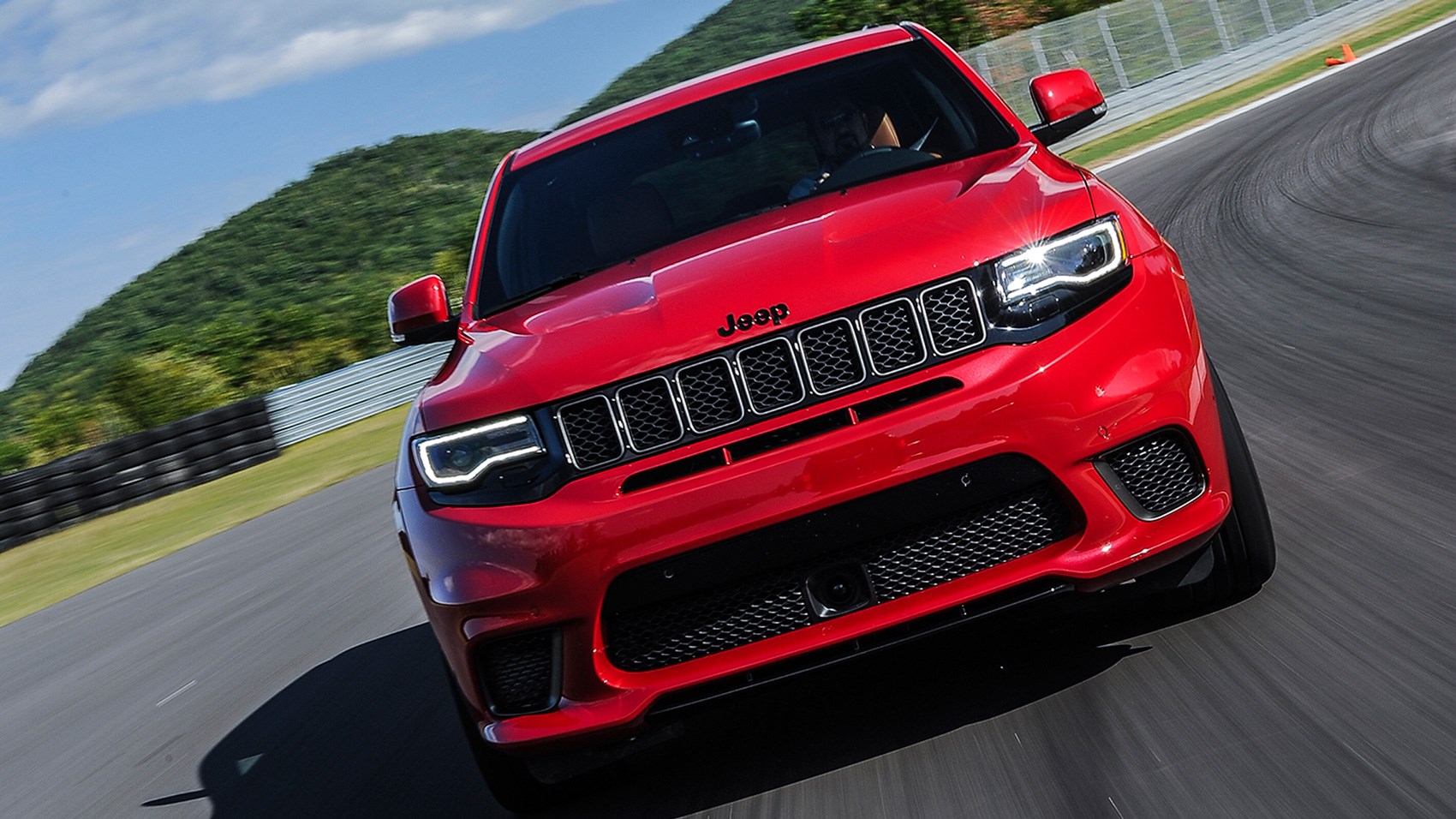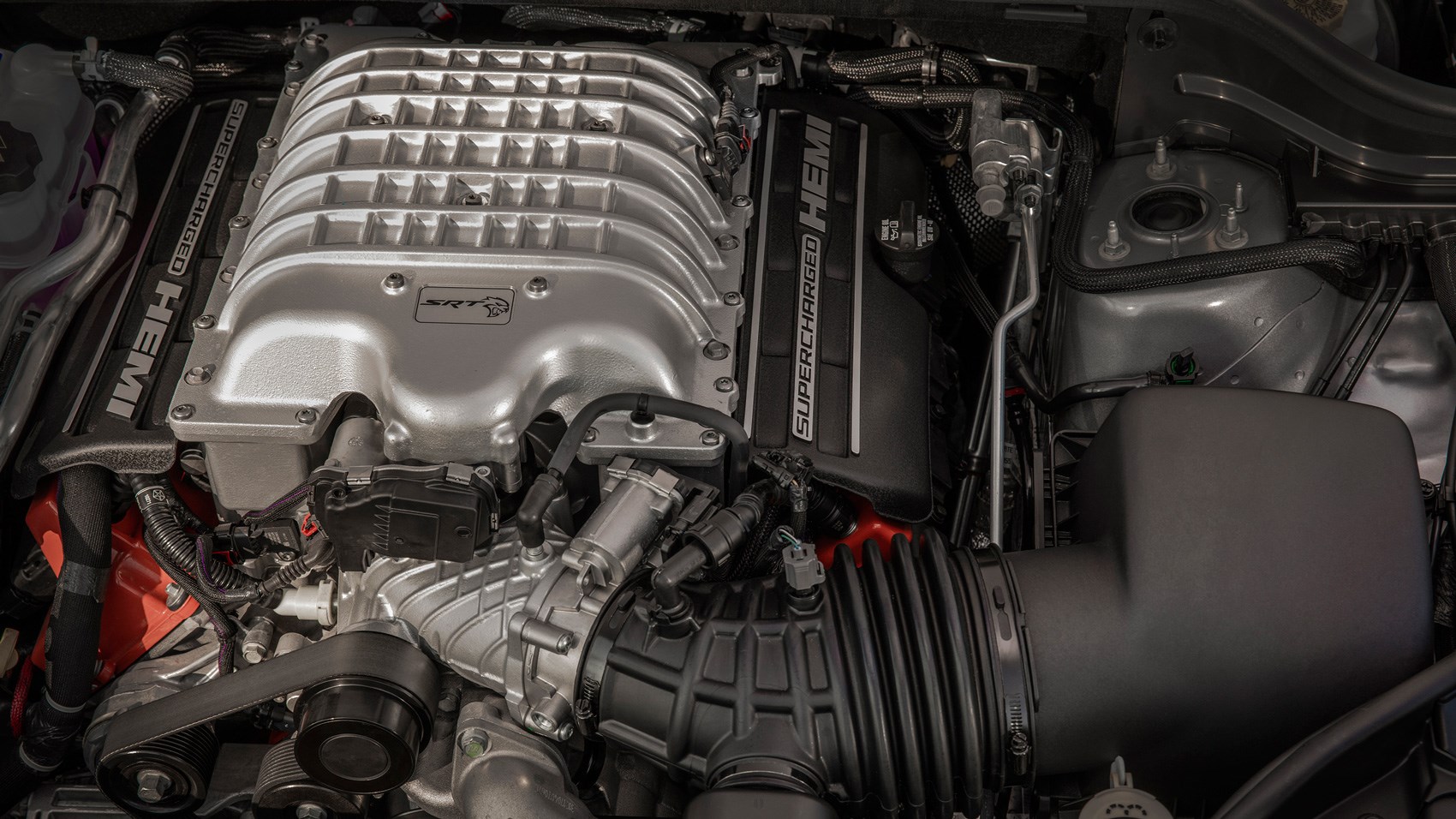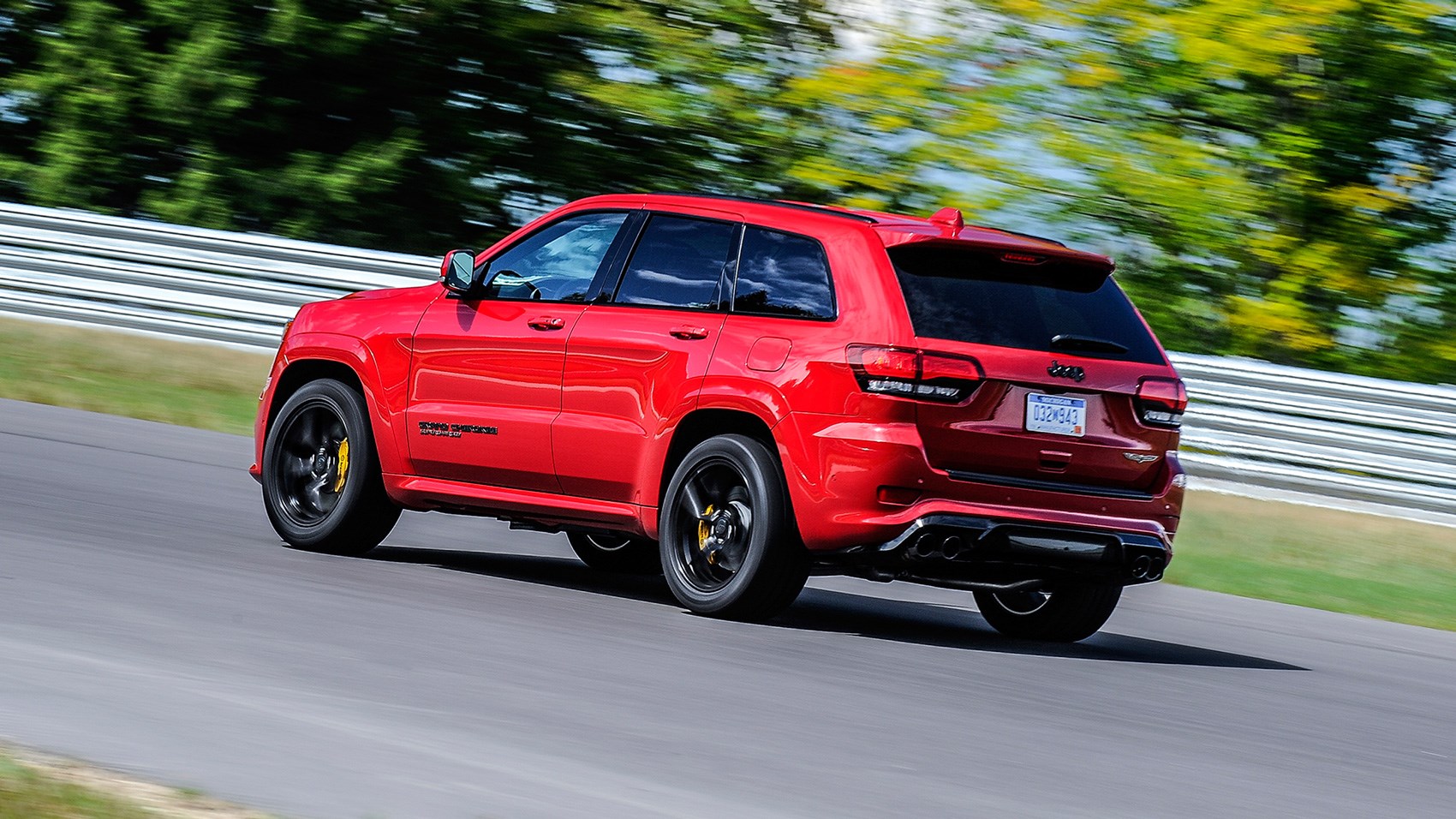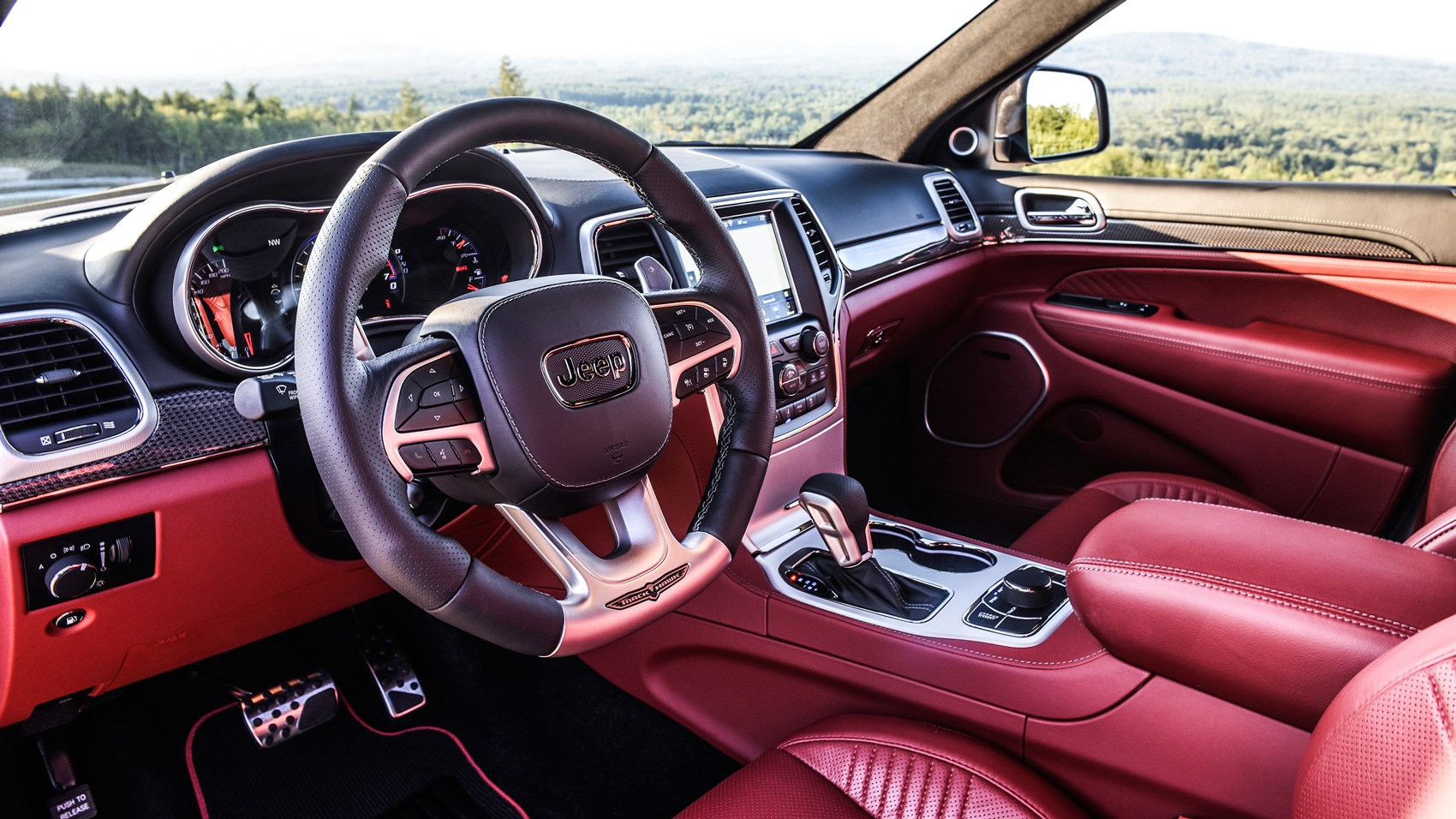► Cherokee Trackhawk tested
► Ultimate Jeep driven
► As American as apple pie
Car names are universally boring now all the generally violent animal ones such as Mustang, Pantera, Viper and so on have been taken. One commendable exception in recent years is the Dodge Challenger Hellcat.
Along with the Challenger, the near-700bhp, 6.2-litre supercharged V8 has been dropped into Jeep’s big SUV. The Jeep Grand Cherokee Trackhawk (equally awesome name) takes on the big-block V8 and plants it in a much more family-friendly shape. The good news? It’s not just limited to the US…
Wait, you can get this thing in Europe?
Oh yes. Jeep has confirmed that this isn’t just a full-bore experience for those in North America – one of the most powerful production SUVs on the planet right now can be bought in Europe, since the Grand Cherokee is already on sale there and hardly anything needs to change.

CAR understands that you’ll even be able to order one in the UK, too, but Jeep UK won’t officially list it as a model on its website. The idea is that if you ask for one, they can sort you one out, since Jeep builds them in right-hand drive for the Aussie market already.
So this Jeep has more power than a Ferrari 488?
Yes! You get 697bhp at 6000rpm and 645lb ft of torque, so 0-62mph falls in 3.7 seconds and the top speed is limited by the car’s bluff aero profile at 180 mph.
That means it’ll breeze past German rivals from Porsche, BMW and Audi. Granted there’s no Cayenne Turbo S yet, but even so, it’ll need to be three tenths quicker than the standard Turbo in order to overtake the Jeep:
You’ll need to activate the launch control to get anywhere near that sprint figure, which in turn switches on the Torque Reserve system. This essentially winds up the supercharger to give you 6psi of boost on the line, while the gearbox prioritises torque transfer rather than quick shifts for maximum acceleration.
As a result the Jeep boasts an 11.6sec quarter mile and feels every bit as fast as those numbers suggest. It gets out of the blocks remarkably quickly for a 2.4-tonne vehicle and transmits its power to the tarmac cleanly and without fuss. It’s like freefalling in an outhouse.
Why is the Jeep Grand Cherokee Trackhawk so heavy?
Believe it or not the Jeep is only marginally weightier than its rivals, and that’s largely down to the fact it has a 6.2-litre lump under the bonnet.
It’s a magnificent engine with serious Detroit muscle credentials. The technical specification features heavy metal descriptions such as ‘forged-steel crankshaft with induction-hardened bearing surfaces’ and ‘powder-forged connecting rods with high-load-capacity bushings and carbon-coated piston pins.’ Make no mistake, this is a proper fire-and-brimstone powerplant.

Cold air from a scoop where the driver’s-side foglamp should be feeds a 2380cc-per-revolution supercharger that breathes out 30,000 litres per minute at 11.6 psi. Integral charge-air coolers and a low-temperature cooling system help to keep the intake air temperatures below 60deg C, and Jeep says you should be able to complete six full laps of a hot circuit in Texas before the Trackhawk needs a breather. Impressive stuff.
What’s it like to drive?
We’ve had two experiences of the car and both were brief. Our first stint was a few laps at the Spring Mountain Motor Resort near Las Vegas, while our second and more recent drive was at Fiat Chrysler’s test facility in Balocco, Italy.
Adam Binnie, Spring Mountain:
On the whole the Trackhawk impressed. It felt softer than European rivals, with greater body movements when turning or braking, but plenty of grip from the Quadra-Trac on-demand four-wheel-drive system giving way to understeer unless you provoke the car on the brakes.
It’s not a particularly subtle or precise experience as per a Porsche Cayenne, but there’s no denying the potency of the Hellcat lump, which propels you down the road at an alarming rate.
Jake Groves, Balocco:
This experience was even shorter than Adam’s – just one lap of Balocco’s handling circuit with a chase car ahead. But the Trackhawk is quite a thrill, in a blunt and wayward sort of way. The noise is obscene and there’s no hiding both the GC’s weight and dimensions – it’s a little odd driving something so quickly that’s about as large and hefty as a block of flats.
That solitary lap will be etched in memory, though. The turn of speed is addictive and dealt with exceptionally via the automatic gearbox’s stubby wheel-mounted paddles. Body lean is quite significant, even in Sport – something a Cayenne Turbo simply wouldn’t accept. But, as Adam says above, it’s quite easy to get the back to step out if you play around with the brakes mid-corner.
More driving specs below…

Driveline and chassis components have been beefed up to deal with that extra power, including the eight-speed automatic gearbox and rear driveshafts, plus there’s a new, stronger rear axle, and revised rear limited-slip differential.
Most notable of all, though, are the stronger Brembo brakes, featuring six-pot yellow calipers up front, and four-pots at the back. Jeep says it’ll haul up from 62mph in 37 meters, and we found ourselves braking closer and closer to the track limits as the laps went by.
Jeep’s Selec-Track drive modes give you five options plus an individual mix-and-match setting, altering parameters for the four-wheel-drive system, steering, transmission, and the Bilstein adaptive suspension:
- Auto uses a 40/60-percent torque split
- Sport uses a 35/65 torque split and shortens shift times – the stability control, suspension, four-wheel-drive and steering systems are set up for enthusiastic road driving – paddle shifters active
- Track sends 70% of power to the rear wheels and slashes shift times by 68% to 160 milliseconds, while the stability control, suspension, four-wheel-drive and steering systems are set for track performance – paddle shifters are enabled
- Tow features a 60/40 split, alters the torque delivery off the line for greater smoothness, and adjusts suspension to combat pitch and yaw
- Snow maximizes traction reduced engine horsepower and a 50/50 torque split
Any luxuries?
We drove US-spec cars which were very well-equipped, with 20-inch titanium-finish wheels, heated and ventilated seats front and rear, adaptive cruise, brake assist, blind-spot monitor and parking sensors plus Nappa leather and suede seats featuring an embroidered Trackhawk logo.
The centre console features an 8.4-inch touchscreen with Trackhawk Performance Pages (a bit like the graphical gauges in a Nissan GT-R) and the Uconnect 4 system, featuring Apple CarPlay and Android Auto.

Styling-wise the Trackhawk is distinguished by quad 4-inch black chrome exhaust tips, a redesigned front bumper, flared arches and side sill cladding. It rides one inch lower than the standard Grand Cherokee.
Options include dark ruby red leather, a panoramic sunroof, dual-screen rear-seat entertainment and an 825-watt Harman Kardon audio system with 19 speakers. Lightweight 20-inch alloys save a total of 5.44 kg, which isn’t a lot, but every little helps, right?
Verdict
The Jeep Grand Cherokee Trackhawk doesn’t handle as well as a Euro-spec super-SUV but it’s adept for a car of this bulk. The Hellcat V8 is an epic motor that sounds like two tigers stuffed in a Spitfire, and revs so cleanly you’ll need to concentrate to avoid hitting the limiter. This is not the apologetic turbo’d six-pot or diesel lump we Yurrupeans insist on fitting in our fast SUVs.
Best of all the bottom line ($86,995, which is approximate to £66,297, although UK pricing is TBC) means you can afford to chuck tenners out of the window at a BMW X5M driver as they disappear in your rear-view, which is surely reason enough to buy one.
A bold and brash American SUV with a hawk on the bootlid and eye-wateringly low fuel economy is never going to sell in massive numbers over here. That’s a shame, because my goodness, what a laugh it is.
Check out our Jeep reviews here